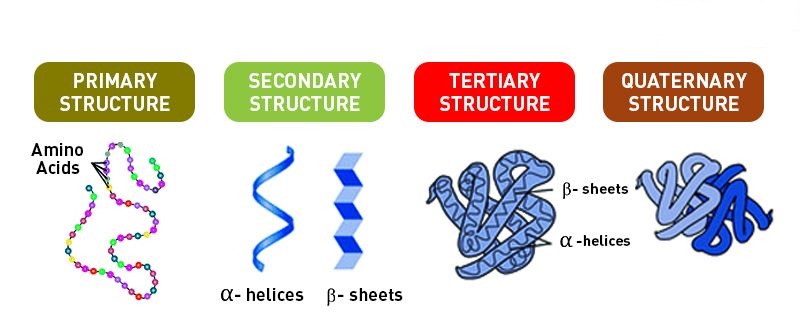Facts about Food Nutrients
Nutrients are molecules in food that all organisms need to make energy, grow, develop, and reproduce. Nutrients are digested and then broken down into basic parts to be used by the organism.
There are two main types of nutrients: – (1) macronutrients and (2) micronutrients.
The three main categories of macronutrients include: –
- Carbohydrate
- Fats & Oil (Lipid)
- Protein
The two types of micronutrients: -vitamins and minerals, and these are extra molecules that cells need to make energy.
- Vitamins
- Minerals
Macronutrients
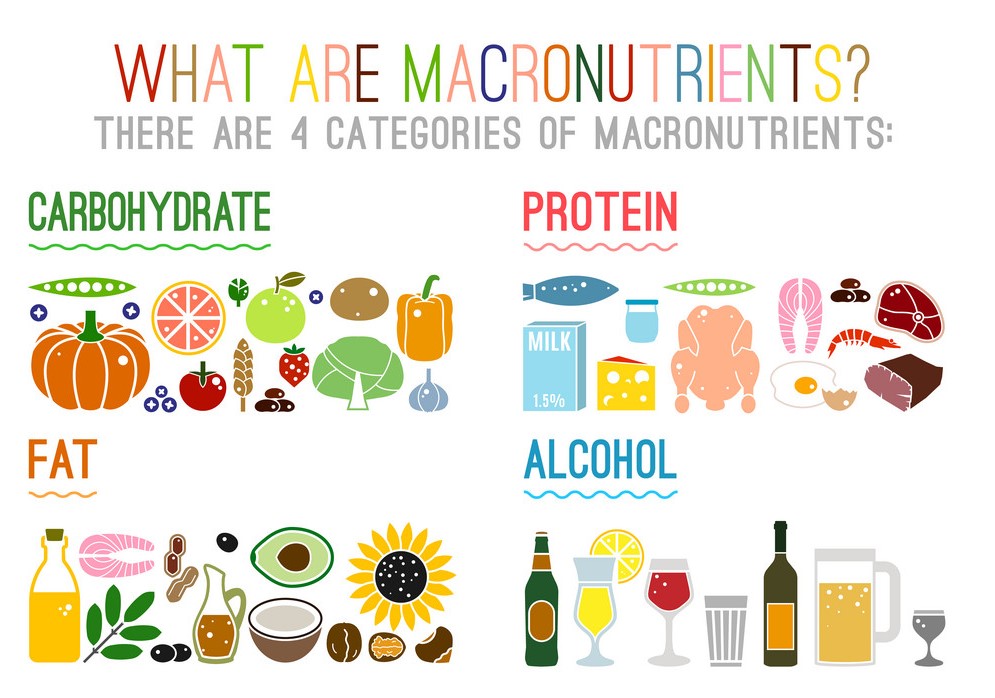
- Carbohydrates:-
Carbohydrates is a biomolecule consisting of carbon (C), hydrogen (H) and oxygen (O) atoms, usually with a hydrogen–oxygen atom ratio of 2:1 (as in water) and thus with the empirical formula Cm (H2O) n (where m may be different from n).
Carbohydrates are the body’s main source of energy. They are called carbohydrates because, at the chemical level, they contain carbon, hydrogen and oxygen.
Carbohydrates Types
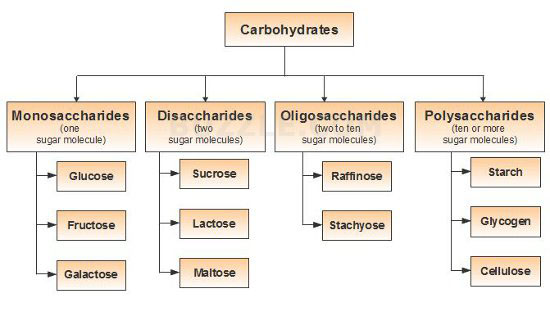
Carbohydrates are found in a wide variety of natural and processed foods.
What is Sugar & its source.
All green plants, such as fruits and vegetables, produce sugars through photosynthesis, a natural process that turns sunlight into energy. These include glucose and fructose, which are converted by the plant into sucrose. Sucrose, glucose, and fructose are found naturally in all plants, and are the basis for all food energy.
Examples are:-
What is glucose?
Glucose is a simple sugar with the molecular formula C6H12O6. Glucose is the most abundant monosaccharide. Glucose is mainly made by plants and most algae during photosynthesis from water and carbon dioxide, using energy from sunlight, where it is used to make cellulose in cell walls, which is the most abundant carbohydrate.
It’s a type of sugar that we get from foods we eat, and our body uses it for energy. As it travels through our bloodstream to our cells, it’s called blood glucose or blood sugar.
What is fructose?
Fructose is like glucose, a mono-saccharide sugar and the sweetest of all naturally occurring carbohydrates. Fructose is the main naturally found sugar in honey and fruits (e.g. dates, raisins, figs, apples, and freshly pressed fruit juices) and in small amounts in some vegetables (e.g. carrots).
Fructose is a type of sugar found in many fruits and vegetables and in honey. Fructose is used to sweeten some diet foods, but this type of sweetener is typically not recommended for people with diabetes because it could negatively affect blood sugar levels.
What is galactose?
Galactose is a simple sugar, which belongs to simple carbohydrates. Galactose is composed of the same elements as glucose but has a different arrangement of atoms. Galactose is not an essential nutrient, which means we do not need to get it from food to be healthy; galactose can be synthesized in the human body from glucose.
What is Sucrose? (Glucose + Fructose)
Sucrose is a compound sugar (a molecule composed of two monosaccharides: glucose and fructose) Sucrose is produced naturally in plants, from which table sugar is refined. It has the molecular formula C12H22O11. A glucose and fructose molecule together make table sugar (sucrose) which is half fructose and half glucose
Sucrose is extracted and refined from either sugarcane or sugar beet. Many mammals, birds, insects and bacteria accumulate and feed on the sucrose in plants and for some it is their main food source. Seen from a human consumption perspective, honeybees are especially important because they accumulate sucrose and produce honey. Sucrose is a naturally occurring sugar, but with the advent of industrialization, it has been increasingly refined and consumed in all kinds of processed foods.
What is Lactose?
Lactose is a disaccharide and is composed of glucose and galactose, two simpler sugars used as energy directly by our body. Lactose is the principal sugar (or carbohydrate) naturally found in milk and dairy products such as cow’s milk, goat’s milk, yogurt, cheese and ice cream.
Lactose makes up around 2–8% of milk (by weight)
What is Maltose ? (Glucose + Glucose)
Maltose also known as malt sugar, is a disaccharide formed from two units of glucose. Maltose is found mainly in grains and cereals. Wheat, corn, barley and rye all contain varying amounts of maltose.
What is Starch-
Starch is a polysaccharide consisting of numerous glucose units joined by glycosidic bonds. This polysaccharide is produced by most green plants as energy storage. It is the most common carbohydrate in human diets and is contained in large amounts in staple foods like potatoes, wheat, maize (corn), rice, and cassava.
Starch is abundant in cereals (wheat, maize, rice), potatoes, and processed food based on cereal flour, such as bread, pizza or pasta.
Starch is the most common carbohydrate in the human diet and is contained in many staple foods. The major sources of starch intake worldwide are the cereals (rice, wheat, and maize) and the root vegetables (potatoes and cassava), many kinds of beans, such as favas, lentils, mung beans, peas, and chickpeas.
In industry, starch is converted into sugars, for example by malting, and fermented to produce ethanol in the manufacture of beer, whisky and biofuel. It is processed to produce many of the sugars used in processed foods. Mixing most starches in warm water produces a paste, such as wheat paste, which can be used as a thickening, stiffening or gluing agent.
- Lipids (Fats & oil)
Another word for “fats & oil.” A lipid is chemically defined as a substance that is insoluble in water and soluble in alcohol, ether, and chloroform. Lipids are an important component of living cells. Together with carbohydrates and proteins, lipids are the main constituents of plant and animal cells.
Like most organic materials (refers to the large source of carbon-based compounds found within natural and engineered), Oils and fats are made up of three elements:-
- Carbon
- Oxygen
- Hydrogen
These elements combine together to form chains known as fatty acids. Three of these chains then join together to form a molecule known as a triglyceride. The triglyceride molecule is the basis of all oils and fats.
Fatty acids
Fatty acids have a backbone made of carbon atoms. They vary in the number of carbon atoms, and in the number of double bonds between them. For example
- Short-chain fatty acids (SCFA) are fatty acids with up to 5 carbon atoms.
- medium-chain fatty acids (MCFA) have 6 to 12
- long-chain fatty acids (LCFA) 13 to 21
- very long chain fatty acids (VLCFA) are fatty acids with more than 22 carbon atoms
The majority of naturally occurring fatty acids, both in the diet and in the body, contain 16-18 carbon atoms.
Fatty acids are also classified according to the presence and number of double bonds in their carbon chain.
- Saturated fatty acids (SFA) contain no double bonds,
- monounsaturated fatty acids (MUFA) contain one double bonds
- polyunsaturated fatty acids (PUFA) contain more than one double bond.
What are Fats?
Some compounds that are soluble in organic solvents and mostly insoluble in water are called fats. They are solid at room temperature. Fat is an effective method of delivering calories when needed. Fats are also important for delivering fat-soluble vitamins such as Vitamins A, E, D, and K.
There are two types of fats that are solid at room temperature.
- Saturated fats
- Trans fats.
Saturated fat is also known as solid fat. Saturated fat in fish and poultry is less when compared to animal fat or red meat.
This fat can increase your cholesterol levels. Tropical oils such as cocoa butter, coconut oil, palm oil also have saturated fats. It is mostly found in non dairy products and snacks in large quantity. Cakes, butter, cookies are some examples of food containing maximum saturated fats.
What are Oils?
Fats that are liquid at room temperature are called oils. Unsaturated fats belong to this category. Consuming food containing unsaturated fat helps improve cholesterol levels.
There are two types of unsaturated fats.
- Monounsaturated fats
- polyunsaturated fats.
Polyunsaturated fat is found in oils such as sunflower, corn and soybean. Seafood majorly consists of these fats. Replacing saturated fat with polyunsaturated fat in food consumption may help in lowering LDL cholesterol. There are two types of polyunsaturated fats. They are Omega 3, Omega 6.
| Difference between Fats and Oils | |
| Fats | Oils |
| Fat are solid at 20 degree C (Room temperature) | Oil are liquid at 20 degree C (Room temperature) |
| Saturated and trans are its types | Unsaturated fats like monounsaturated and polyunsaturated are its types |
| Mostly derived from animal | Mostly derived from plants |
| Higher cholesterol content | No cholesterol content |
| Higher Melting Point | Lower Melting points |
| Cannot be Hydrogenated | Can be Hydrogenated |
| Mainly comes from animal food but also through vegetable oil by process called hydrogenation | Mainly comes from plants or fish |
| Example: Butter, beef fat | Example:Vegetable oil, fish oil |
| Contains 9 cal/gm | Contains 9 cal/gm |
Saturated fat
Tightly-packed fats that are solid at room temperature because they contain no double bonds in their chemical structures are known as saturated fats — because their structures contain as many hydrogen atoms as possible and they are “saturated” with hydrogen. Saturated fats are typically found in the following foods:
These are fats that have single bonds between their molecules and are “saturated” with hydrogen molecules. They tend to be solids at room temperature, such as butter.
These are abundantly found in animal fat, coconut oil, palm oil, whole milk, butter. The over consumption of the saturated fatty acids is harmful to the health as it affects the blood cholesterol by increasing the level of it.
Food sources rich in saturated fat include meat and dairy products, such as:
- cheese
- butter
- ice-cream
- high-fat cuts of meat
- coconut oil
- palm oil
Saturated fatty acids contain long, unbranched chains of carbon atoms.
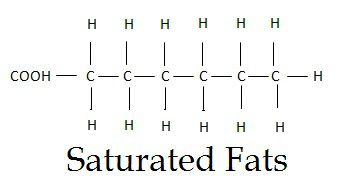

Unsaturated fat
Unsaturated fats, which are liquid at room temperature, are different from saturated fats because they contain one or more double bonds and fewer hydrogen atoms on their carbon chains. Unsaturated fats come from plants and occur in the following kinds of foods:
- Olives
- Olive oils
- Vegetable oils, canola oils and plant oils
- Fish like salmon, anchovies, tuna and others containing omega-3 fatty acids
- Nuts and seeds
- Avocados
By the double bonds (C=C), they are divided into two categories, which are – monounsaturated fatty acids (MUFA) and polyunsaturated fatty acids (PUFA).
Unsaturated fats are beneficial to heart health
because they help reduce high cholesterol levels, which prevents conditions like heart disease and stroke. These healthy, natural fats occur in the following two types:
- Monounsaturated Fats: Consisting of one carbon-to-carbon double bond, monounsaturated fats can help control blood sugar and insulin levels, as well as lower your cholesterol levels to decrease your risk of cardiovascular conditions. Doctors recommend replacing as many saturated fats as possible with monounsaturated fats, which can be found in foods like peanut oil, canola oil, olive oil, nuts, seeds and avocados.
- Polyunsaturated Fats: Containing two or more double bonds in their chemical structures, polyunsaturated fats are essential to regular body functions such as covering nerves, building cell membranes, blood clotting, inflammation and muscle movement — but your body cannot make these fats itself, so it is recommended that you obtain your polyunsaturated fats from your diet.
There are two types of polyunsaturated fats.
- Omega 3,
- Omega 6.
Omega-3 fatty acids are polyunsaturated fats, a type of fat our body can’t make.
omega-3 fatty acids have many double bonds.”Omega-3″ refers to the position of the final double bond in the chemical structure, which is three carbon atoms from the “omega” or tail end of the molecular chain.
Since the human body can’t produce omega-3s, these fats are referred to as “essential fats,” meaning that you have to get them from your diet.
Foods High in Omega-3 Fats
The best source of omega-3 EPA and DHA is oily fish
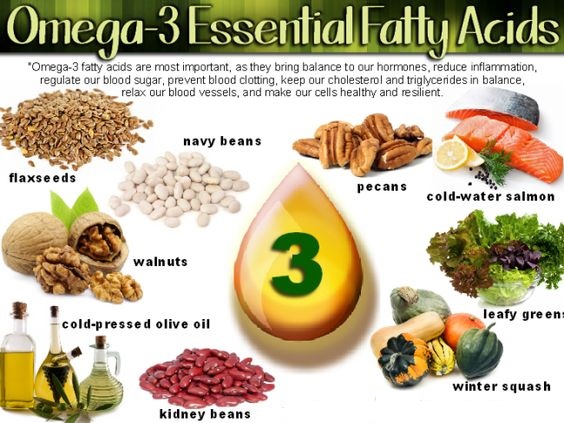 |  |
Benefit of Omega 3 :-
- Improving heart health: Omega-3 fatty acids can increase “good” HDL cholesterol.
- Supporting mental health: Taking omega-3s can reduce symptoms of depression
- Reducing weight and waist size: Omega-3 fats play an important role in weight management and can help reduce waist circumference
- Decreasing liver fat: Consuming omega-3s in your diet can help decrease the amount of fat in your liver
- Fighting inflammation: Omega-3 fats are anti-inflammatory, meaning they can reduce the inflammation in your body that can contribute to a number of chronic diseases
- Preventing asthma: Omega-3 intake can help reduce symptoms of asthma, especially in early life
Structure of Omaga 3 & Omega 6 fatty acids:-
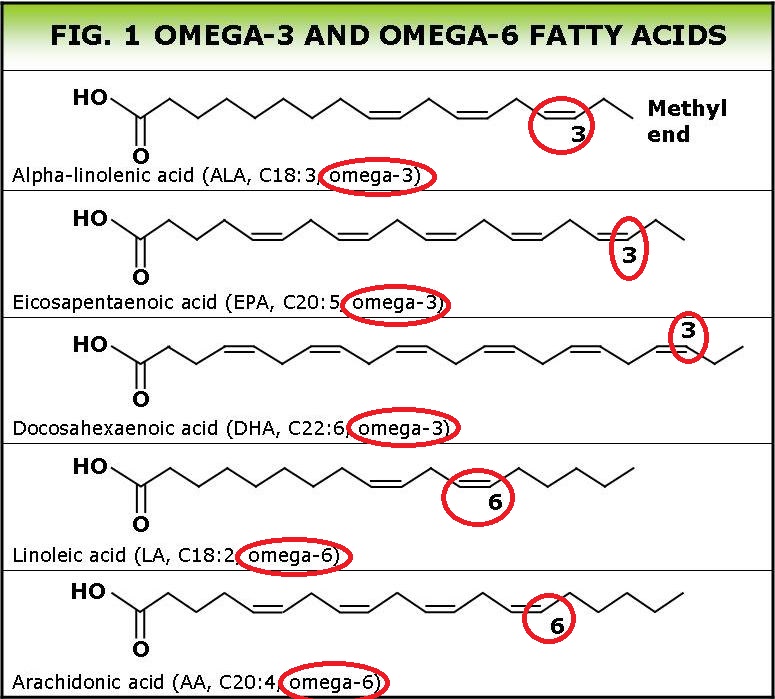
Like omega-3 fatty acids, omega-6 fatty acids are polyunsaturated fatty acids. The only difference is that the last double bond is six carbons from the omega end of the fatty acid molecule. Omega-6 fatty acids are also essential
The recommended ratio of omega-6 to omega-3 fatty acids in the diet is 4:1 or less
Omega-6 fats are found in large amounts in refined vegetable oils and foods cooked in vegetable oils. Adequate intake of omega-6s per day is 17 grams for men and 12 grams for women.
Foods High in Omega-6 Fatty acid-
Omega-6 fats are found in large amounts in refined vegetable oils and foods cooked in vegetable oils. Nuts and seeds also contain significant amounts of omega-6 fatty acids.
Here are the amounts of omega-6s in 100 grams (3.5 oz) of the following foods:
- Soybean oil: 50 grams
- Corn oil: 49 grams
- Walnuts: 37 grams
- Sunflower seeds: 34 grams
- Almonds: 12 grams
- Cashew nuts: 8 grams
What is Trans Fat:-
An unhealthy substance that is made through the chemical process of hydrogenation of oils. Hydrogenation solidifies liquid oils and increases the shelf life and the flavor stability of oils and foods that contain them. Trans fatty acids are found in vegetable shortening and in some margarine, crackers, cookies, and snack foods.
Trans fatty acids are also found in abundance in many deep-fried foods. Trans fatty acids both raise the ‘bad’ (LDL) cholesterol and lower the ‘good’ (HDL) cholesterol levels in blood, markedly increasing the risk of heart disease.
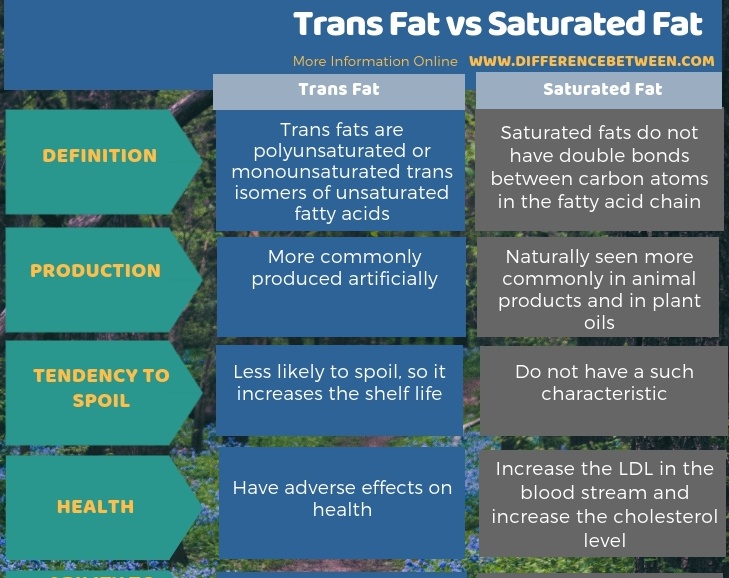

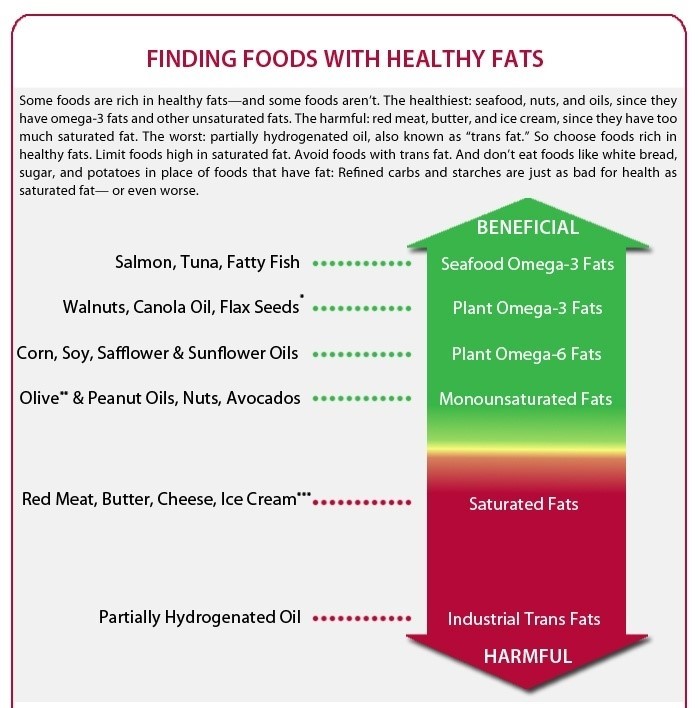 Protein
Protein
Proteins are perhaps the most complex organic materials produced in nature. Plants build up their proteins from carbon dioxide, water, and minerals in the presence of sunlight, whereas animals derive it from eating plants. Proteins consist of hundreds or thousands of smaller units called amino acids that are attached in long chains to each other. Proteins are composed of amino acids, arranged into different groups. Amino acids are classified as either essential or non-essential. As the name suggests, essential amino acids cannot be produced by the body and therefore must come from our diet. Whereas, non-essential amino acids can be produced by the body and therefore do not need to come from the diet..
What do proteins do for the body?
Our bodies are made up of thousands of different proteins, each with a specific function. They make up the structural components of our cells and tissues as well as many enzymes, hormones and the active proteins secreted from immune cells.
These body proteins are continually being repaired and replaced throughout our lives. This process (known as ‘protein synthesis’) requires a continuous supply of amino acids.
The most common food which has a higher amount of protein are eggs, almond, chicken, oats, fish and seafood, soy, beans and pulses, cottage cheese, Greek yogurt, milk, broccoli, and quinoa.
(Quinoa/kinowa:- it is a grain which is mainly found in south America, Africa etc. and it is basically a glutein fee and contains 9 type of amino acid and a very good source of protein and minerals like potassium, magnesium and calcium, Vitamin E.
Functions of Proteins
Protein is the only nutrient that can build, repair, and maintain body tissues. An adequate supply of proteins in the daily diet is essential. All tissues and fluids in the body, with the exception of bile and urine, contain some protein. Since Proteins are made of amino acids, small units necessary for growth and tissue repair. Proteins are important in the development of skin, teeth, and bones. In addition, they build and repair damaged tissue and are important in enzyme and hormone production.

5 Basic function of Protein:-
- Enzymes: Enzymes mostly carry out all numerous chemical reactions which take place within a cell. They also help in regenerating and creating DNA molecules and carry out complex processes.
- Hormones: Proteins are involved in the creation of various types of hormones which help in balancing the components of the body. For example hormones like insulin, which helps in regulating blood sugar and secretin. It is also involved in the digestion process and formation of digestive juices.
- Antibody: Antibody also known as an immunoglobulin. It is a type of protein which is majorly used by the immune system to repair and heal the body from foreign bacteria. They often work together with other immune cells to identify and separate the antigens from increasing until the white blood cells destroy them completely.
- Energy: Proteins are the major source of energy that helps in the movements of our body. It is important to have the right amount of protein in order to convert it into energy. Protein, when consumed in excess amounts, gets used to create fat and becomes part of the fat cells.

Vitamins & Minerals-
Vitamins and minerals are both essential nutrients which are required in a daily diet. Altogether, there are 13 essential vitamins and many minerals which are required for the body to function properly and to maintain the optimal health. Both vitamins and minerals combined perform hundreds of roles in the body.
Vitamins are organic compounds, found in natural foods which are required for normal growth and maintenance of the body. Both humans and animals require vitamins for their growth.
Vitamins act as a catalyst in the generation of energy by utilizing carbohydrates and fats properly. Humans cannot live without vitamins and the human body cannot produce it on its own ( except vitamin D and Vitamin B3). So it should be taken in required quantities through other sources such as the food we take,
Vitamins is divided into 2 categories: water-soluble vitamins & fat-soluble vitamins
Water-Soluble Vitamins
Most vitamins dissolve in water and are therefore known as water-soluble. They’re not easily stored in your body and get flushed out with urine when consumed in excess. While each water-soluble vitamin has a unique role, their functions are related.
The water-soluble vitamins — with some of their functions — are:
- Vitamin B1 (thiamine): Helps convert nutrients into energy.
- Vitamin B2 (riboflavin): Necessary for energy production, cell function and fat metabolism.
- Vitamin B3 (niacin): Drives the production of energy from food.
- Vitamin B5 (pantothenic acid): Necessary for fatty acid synthesis
- Vitamin B6 (pyridoxine): Helps your body release sugar from stored carbohydrates for energy and create red blood cells.
- Vitamin B7 (biotin): Plays a role in the metabolism of fatty acids, amino acids and glucose.
- Vitamin B9 (folate): Important for proper cell division.
- Vitamin B12 (cobalamin): Necessary for red blood cell formation and proper nervous system and brain function.
- Vitamin C (ascorbic acid): Required for the creation of neurotransmitters and collagen, the main protein in your skin.
Fat-Soluble Vitamins
Fat-soluble vitamins do not dissolve in water. They’re best absorbed when consumed alongside a source of fat. After consumption, fat-soluble vitamins are stored in your liver and fatty tissues for future use.
- Vitamin A: Necessary for proper vision and organ function.
- Vitamin D: Promotes proper immune function and assists in calcium absorption and bone growth
- Vitamin E: Assists immune function and acts as an antioxidant that protects cells from damage
- Vitamin K: Required for blood clotting and proper bone development
Minerals: –
Minerals
Minerals are also organic compounds found in nature, which helps in growth of human body. Minerals are essential for human body to work properly. Deficiency of minerals leads to several disorders.
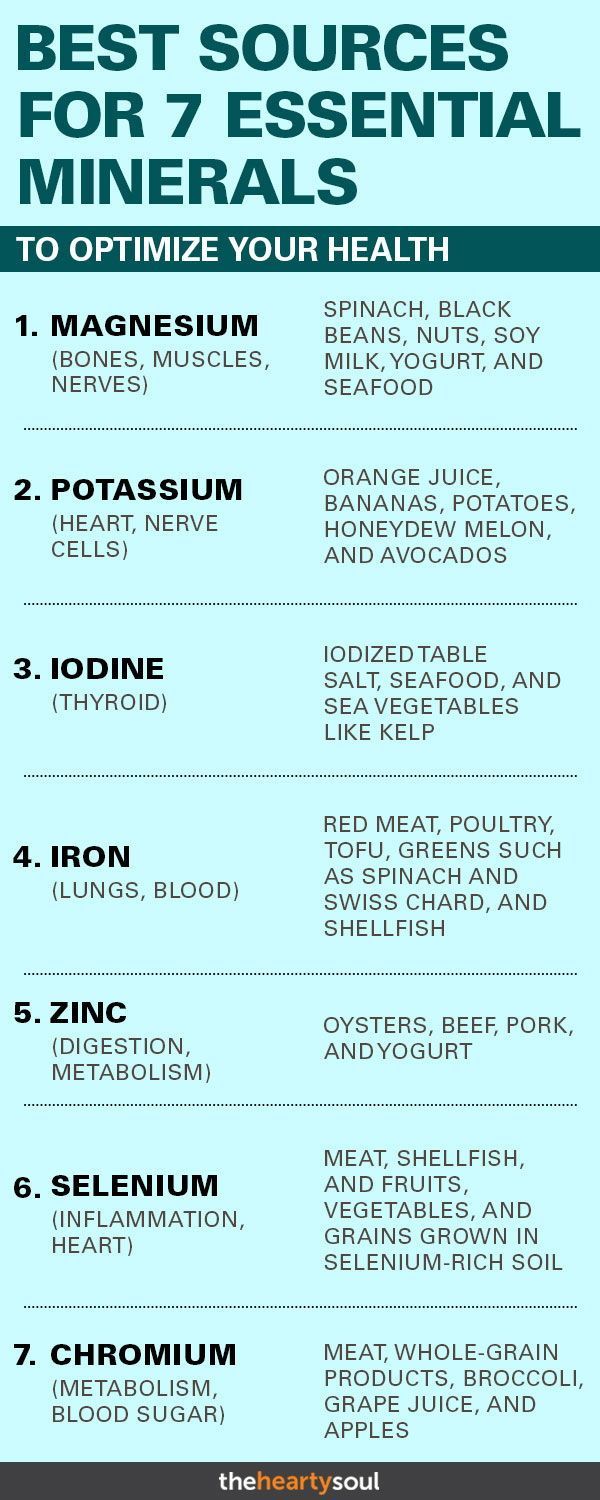
Function of Minerals: –
- Calcium: Necessary for proper structure and function of bones and teeth. Assists in muscle function and blood vessel contraction.
- Phosphorus: Part of bone and cell membrane structure.
- Magnesium: Assists with over 300 enzyme reactions, including regulation of blood pressure.
- Sodium: Electrolyte that aids fluid balance and maintenance of blood pressure.
- Chloride: Often found in combination with sodium. Helps maintain fluid balance and is used to make digestive juices.
- Potassium: Electrolyte that maintains fluid status in cells and helps with nerve transmission and muscle function.
- Sulfur: Part of every living tissue and contained in the amino acids methionine and cysteine
Trace Minerals
Trace minerals are needed in smaller amounts than macrominerals but still enable important functions in your body.
The trace minerals and some of their functions are:
- Iron: Helps provide oxygen to muscles and assists in the creation of certain hormones.
- Manganese: Assists in carbohydrate, amino acid and cholesterol metabolism.
- Copper: Required for connective tissue formation, as well as normal brain and nervous system function.
- Zinc: Necessary for normal growth, immune function and wound healing.
- Iodine: Assists in thyroid regulation.
- Fluoride: Necessary for the development of bones and teeth.
- Selenium: Important for thyroid health, reproduction and defence against oxidative damage.
****

